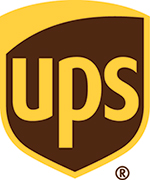Nearly all UPS Teamsters Local Unions Accept Tentative Agreement
On July 25, UPS, made a tentative agreement with the International Brotherhood of Teamsters. Yesterday, the Teamsters reported that 161 out of 162 Teamsters local unions voted to endorse the tentative agreement and urge its full acceptance by all 340,000 full- and part-time UPS Teamsters members.
Following a tentative agreement made between Atlanta-based global freight transportation and logistics services provider UPS and the International Brotherhood of Teamsters on July 25, the Teamsters said yesterday that Teamsters local unions voted by a nearly unanimous 161-1 vote in favor of endorsing the tentative agreement and recommend its passage by full membership, for the 340,000 full- and part-time UPS Teamsters members.
UPS and Teemster's Agreement
Teamsters’ officials said that among its local unions, there were 14 affiliates that failed to show up to a meeting to review the tentative agreement, and added that there were at least two representatives from all other local unions discussed more than 60 changes and improvements to the UPS Teamsters National Master Agreement at a meeting in Washington.
They noted that the tentative agreement, which they said is valued at $30 billion, is notable in various ways, including: record wage increases for all workers for the life of the contract; installation of air conditioning in new vehicles; the end of a two-tier wage system it called “unfair”; catch-up raises for part-time workers; Martin Luther King Day as a paid holiday for the first time; and new language to prevent forced overtime on days off, among other concessions.
Teamsters General President Sean M. O’Brien in a statement:
“The entire UPS Teamsters National Negotiating Committee stands behind this historic contract and our UPS local unions have resoundingly voted to endorse it. Our tentative agreement is richer, stronger, and more far-reaching than any settlement ever negotiated in the history of American organized labor. The Teamsters are immensely proud of reaching agreement with UPS to improve the lives of our members, their families, and working people across the country.”
As reported by LM, the tentative agreement reached last week was far from certain, as negotiations through July—and prior to that—saw the parties ostensibly refusing to budge on certain terms and conditions, with the possibility of a strike, for the United States-based UPS Teamsters members looking more and more like a possibility as July moved along.
When the tentative deal was reached, UPS officials said that the five-year agreement covers U.S. Teamsters-represented employees in small-package roles and is subject to voting and ratification by union members.
The Teamsters, at the same time, lauded this deal as the most historic tentative agreement for workers in the history of UPS, calling the contract overwhelmingly lucrative, raising wages for all UPS Teamsters workers, creating more full-time jobs, and including dozens of workplace protections and agreements.
Strike Averted
UPS and the Teamsters returned to the negotiating table on July 19, following weeks of tension between the parties, leaving many industry stakeholders concerned over the potential of a strike, which would have been costly for all involved parties, and the entire supply chain, by extension, as UPS moves roughly 6% of U.S. GDP and moves more than 27 million packages in the U.S. per day.
The fact that the parties returned to the negotiating table represented, at the time, at least a form of modest progress, considering that on July 5, the Teamsters stated that negotiations had collapsed, with UPS having made what the Teamsters called an “unacceptable offer to the Teamsters that did not address members’ needs,” leading to the UPS Teamsters National Negotiating Committee, which represents the 340,000 full- and part-time worker UPS Teamsters members, to reject the offer.
What’s more, the Teamsters said that UPS refused to give the Teamsters a last, best, and final offer, telling the union the company had nothing more to give. As previously stated, the Teamsters said that its UPS members will not report for work after July 31, at the expiration of the current contract, which was indicated by 97% of UPS Teamsters members authorizing a strike last month.
A July 16 Bloomberg report noted that “the last major sticking point for renewing a new five-year labor agreement has to do with the Teamsters asking for higher part-time wages.
The report cited the Teamsters’ O’Brien as saying it is unacceptable that 100,000 part-time UPS workers make less than $20 per hour.
UPS countered that earlier this month, stating that part-time union employees at UPS currently make an average of $20 an hour after their first 30 days of employment and receive wage increases every year, in addition to cost-of-living adjustments.
And in addition to competitive pay, the company said UPS part-time employees receive the exact same industry-leading health and medical benefits as full-time employees. UPS added:
“They are among just 7% of U.S. private sector employees to receive a pension, and also receive healthcare benefits with no premiums and low or no copays. Starting part-time wages are $16.20 (at minimum).”
UPS said it was making preparations, in the event of a strike. UPS said in a statement issued on July 14:
“We remain focused on reaching an agreement with the Teamsters that is a win for UPS employees, our customers, our union, and our company before Aug. 1. While we have made great progress and are close to reaching an agreement, we have a responsibility as an essential service provider to take steps to help ensure we can deliver our customers’ packages if the Teamsters choose to strike.”
To that effect, UPS said that in advance of a potential strike, many of its U.S. employees were participating in training that would help them safely serve its customers if there ended up being a labor disruption.
UPS adds:
“This temporary plan has no effect on current operations and the industry-leading service our people continue to provide for our customers. This training is aligned with our ongoing commitment to safety and business continuity. These activities also will not take away from our ongoing efforts to finalize a new contract that increases our employees’ already industry-leading wages and benefits, allows UPS to remain competitive and provides certainty for our customers and the U.S. economy.”
Jerry Hempstead, president of Orlando-based Hempstead Consulting, observed that with a tentative deal in place, the most important thing now, for shippers, is to try to protect themselves from price increases that have to inevitably come in order to pay for all the concessions.
“And as Big Brown [UPS] does the Purple Package Co. [FedEx] is most likely to follow. In about 10 weeks the GRI silly season begins so, buckle up, we may be in for a bumpy ride.”
Tommy Storch, a transportation procurement expert at Insight Sourcing Group, stated that the current agreement is likely to have a significant impact on the market, observing that with the increase in workers' compensation, UPS is expected to transfer the cost to customers through higher rates.
“This move aligns with UPS's recent stance of focusing on being ‘better, not bigger,’ and rejecting contracts during the pandemic,” said Storch.
Storch adds:
“Last year, UPS implemented a general rate increase of 6.9%, which was a full percentage point above the typical 4.9% to 5.9% increases. Considering the additional compensation for workers, we should anticipate a rise of at least 8% following this new contract, when factoring in accessorial and fuel increases as well.”
Storch added that this increase will serve as a market pricing benchmark, of sorts, with FedEx following and prices rising significantly overall, with regional carriers seeing benefits, as some of whom have already obtained new customers due to the threat of a strike.
Article Topics
UPS News & Resources
UPS rolls out fuel surcharge increases UPS Struggles in First Quarter With Steep Earnings Decline UPS reports first quarter earnings decline Amazon Logistics’ Growth Shakes Up Shipping Industry in 2023 FedEx and UPS to Charge Additional Delivery Fees in Major U.S. Cities Parcel Experts Weigh in on New Partnership Between UPS and USPS Parcel experts examine the UPS-United States Postal Service air cargo relationship amid parcel landscape More UPSLatest in Transportation
City of Baltimore Files Lawsuit to Recoup Money for Collapsed Bridge The Era of Self-Driving Tractor-Trailers Set to Begin Is the Trailers as a Service (TaaS) Model Right For Your Business? Why Grocery Shoppers are Leaving Stores to Buy Their Food Online Unlocking Efficiency: Navigating Sea Freight Logistics in Supply Chain Management Is There a Next Generation of Truckers? Data Reveals Grim Outlook A Look at Baltimore’s Key Bridge Collapse—One Month Later More TransportationAbout the Author















